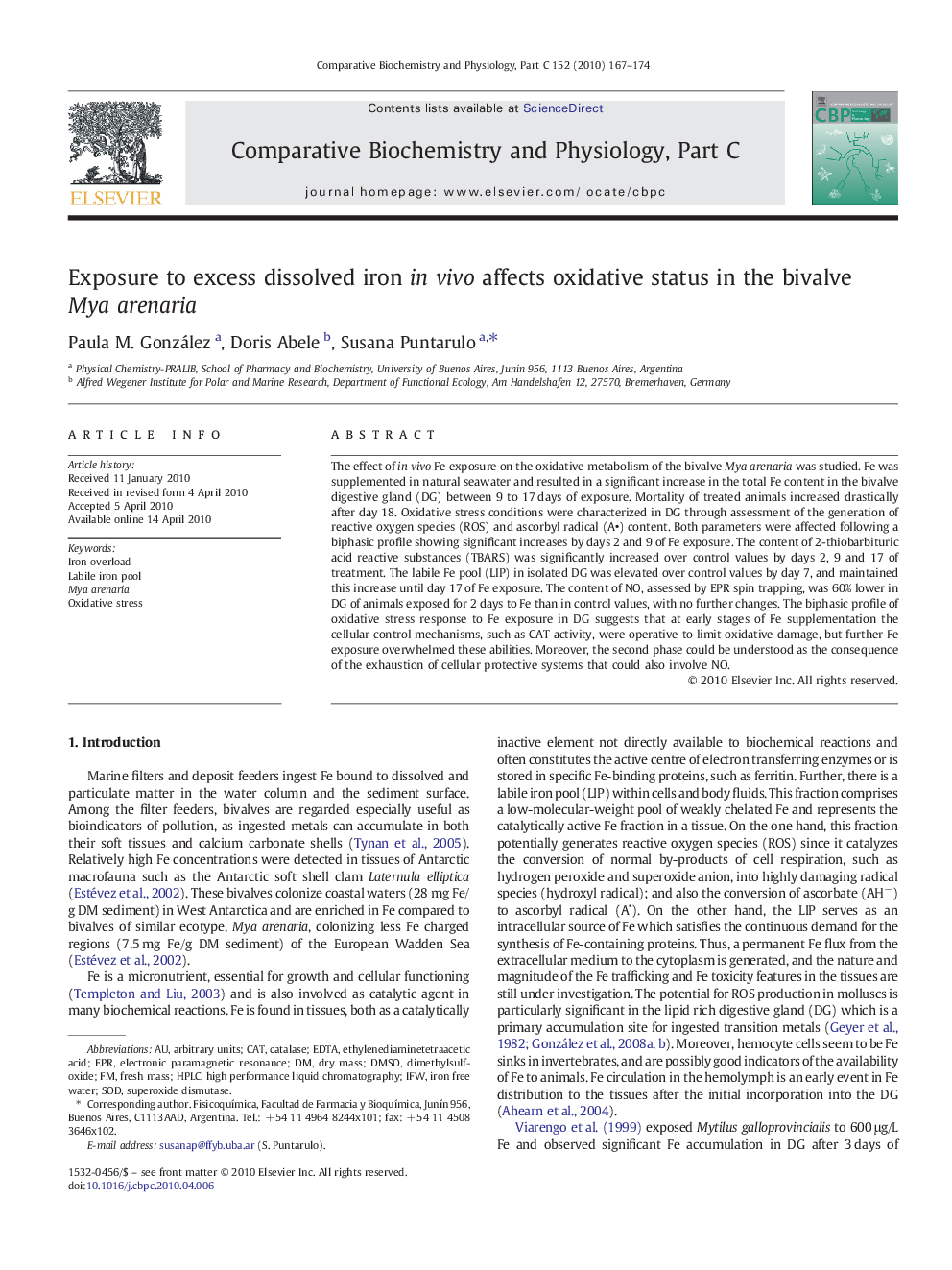| Article ID | Journal | Published Year | Pages | File Type |
|---|---|---|---|---|
| 1978079 | Comparative Biochemistry and Physiology Part C: Toxicology & Pharmacology | 2010 | 8 Pages |
The effect of in vivo Fe exposure on the oxidative metabolism of the bivalve Myaarenaria was studied. Fe was supplemented in natural seawater and resulted in a significant increase in the total Fe content in the bivalve digestive gland (DG) between 9 to 17 days of exposure. Mortality of treated animals increased drastically after day 18. Oxidative stress conditions were characterized in DG through assessment of the generation of reactive oxygen species (ROS) and ascorbyl radical (A) content. Both parameters were affected following a biphasic profile showing significant increases by days 2 and 9 of Fe exposure. The content of 2-thiobarbituric acid reactive substances (TBARS) was significantly increased over control values by days 2, 9 and 17 of treatment. The labile Fe pool (LIP) in isolated DG was elevated over control values by day 7, and maintained this increase until day 17 of Fe exposure. The content of NO, assessed by EPR spin trapping, was 60% lower in DG of animals exposed for 2 days to Fe than in control values, with no further changes. The biphasic profile of oxidative stress response to Fe exposure in DG suggests that at early stages of Fe supplementation the cellular control mechanisms, such as CAT activity, were operative to limit oxidative damage, but further Fe exposure overwhelmed these abilities. Moreover, the second phase could be understood as the consequence of the exhaustion of cellular protective systems that could also involve NO.
